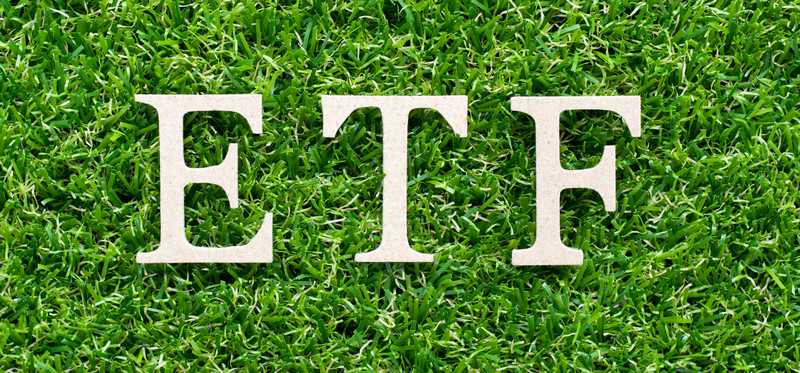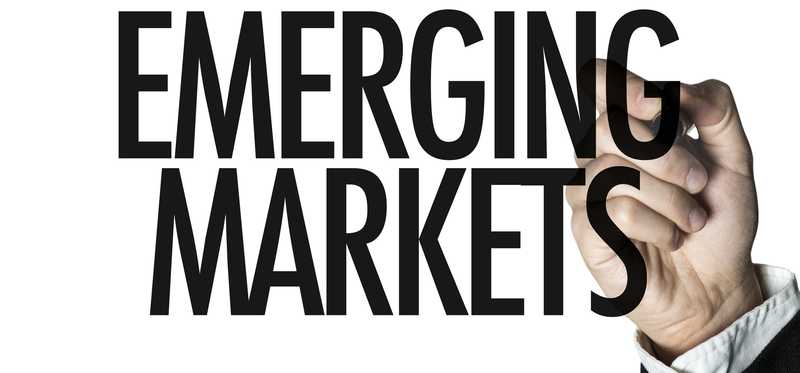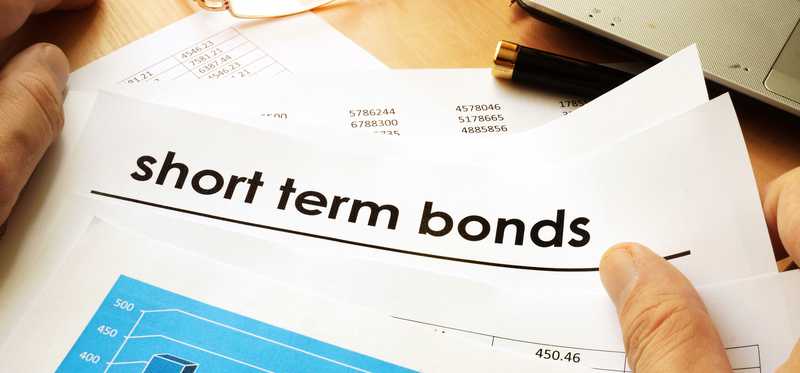10 (Plus) Socially-Conscious Investments for Your Portfolio

10 (Plus) Socially-Conscious Investments for Your Portfolio
You don't have to set aside your values
Investing often requires trade offs between what you believe is socially desirable and making money. That's especially true if you use broadly diversified index-based pooled investment products like exchange traded funds, or ETFs. But you don't have to settle, you can invest along with your values in a socially-conscious way if you do just a tiny bit of extra legwork. Here are 10 ETFs that focus on the environmental, social, and governance (ESG) aspects of the investments they own so you can easily invest in an ethical manner.
Previous
Next

What is this thing you call ESG?
Before getting into the individual exchange traded funds, it's important to stop and understand the what and why of socially-responsible investing. At its simplest level, it is investing in companies and industries that align with your personal social, ethical, and environmental preferences.
One of the best examples is tobacco stocks. These are addictive products that cause major illness, including cancer. If you don't approve of cigarettes or cigarette companies why include them in your portfolio? But if you buy an S&P 500 Index fund, such as SPDR S&P 500 ETF (NYSE: SPY), you will being buying both Altria (NYSE: MO) and Philip Morris International (NYSE: PM), two of the largest tobacco related companies in the world. If you want to avoid companies like this, you need to screen them out. That's exactly what ESG exchange traded funds do for you, so you don't have to.
That said, there are many ways to slice and dice the market, and just as many ways to express your personal values in your investments.
Previous
Next

How do you go about selecting an ESG ETF?
If you are a well-seasoned investor, you might want to skim or just skip over this section and get right to the ETF list. It's mostly investing basics, vital information but not new if you've been around the block a few times.
When you think about investing, it's useful to envision a tool kit. All of the different approaches to selecting an investment are the tools you use to build a portfolio. Socially-conscious investing is a tool. Index investing is a tool. Exchange traded funds are tools, which, in this case, allow you to easily put socially-conscious investing and index investing to work in conjunction with each other.
But how do you go about using these tools? If you are looking at an ESG ETF, the first and most important thing is understanding what the fund does and why. There are nuances that may matter a great deal to you. And since socially-conscious investing is about matching up your life choices with your investing choices, you'll want to focus a lot of attention on picking the funds that resonate with you. For example, a broad based ESG fund (there are a lot of these available) may not hit the right spot if what you really care about is gender equality (these are only a couple of these on the market). Believing in your selections here is likely what will make the difference between you sticking with an investment approach through the inevitable ups and downs in the broader market. Sticking to a long-term plan is one of the most important aspects behind investing success.
Next you'll want to look at diversification. Most ETFs, and all of those in the list here, are index based. Index funds can be wonderful products, offering low expenses and broad diversification... but only if they are created to provide diversification. For example, the first six ESG ETFs on this list all use broad-based filters to create highly diversified portfolios. Mixing and matching with this group of funds you can create a well structured portfolio. The funds that follow get more specific, with at least one focused so finely on a single social niche that it inherently lacks diversification. That doesn't mean it shouldn't be in your portfolio, just that it should be a part of a larger, more-diversified approach. Essentially, understand what you buy.
You will also want to pay attention to costs. Expense ratios on index funds have gotten to the point where they are, virtually, free (in some cases they are literally free). But the more work that has to go into creating a specialized list of companies, such as screening for and maintaining lists of social standards, the more costs will be incurred. Generally speaking, most of the ETFs on this list have fairly low expenses, but they may not be the cheapest investment options out there. And if you are comparing two highly similar ESG ETFs, strongly consider going with the cheaper option unless there's a compelling reason for the added costs.
Performance is another key factor to examine. Notice that it isn't the highest item on this list, which is because ESG investing inherently puts social values ahead of financial returns. That said, any ESG fund you buy should be compared, over time, to a broader index. For stock funds that will often be the S&P 500 Index. But not in every situation, since some ESG funds are really focusing down on a niche sector. That, in turn, may make a different index more appropriate. ESG Bond ETFs, meanwhile, will have their own indexes to look at. That said, ESG investing isn't new, but it is only just gaining increasing attention. So many ESG ETFs only have a year or so of history under the belts. That's not really enough to judge long-term performance. Three or more years is really when you can start to get a handle on how a fund is performing. That doesn't mean you shouldn't buy an ESG ETF with a short history, after all it may match up very well with your social values. But you'll want to keep an eye on relative performance as it builds a track record.
Don't go in expecting an ESG ETF to beat the index, whatever that index happens to be. Look for an ESG ETF to be "around" the index. It would be ideal if ESG investing proved to be the best approach to picking stocks EVER! But sectors and styles go in and out of favor all the time, so content yourself with close. And lagging performance has to be juxtaposed against your desire to invest in a way that feels appropriate to you. For example, it may be okay to fall slightly behind the S&P over time if it means you can sleep well at night knowing your investments aren't causing harm.
With that quick primer (there's a lot more to know about investing, of course), let's get into the ESG ETFs.
Previous
Next

1. The big one
It's quite possible that you don't have any specific preference when it comes to socially-responsible investing. You simply don't want to support any company that might be viewed as doing something bad while owning as diverse a portfolio as possible. That's a pretty big picture view of things, but not unreasonable.
For this investors should look into index fund iShares MSCI KLD 400 Social ETF (NYSEMKT: DSI). The fund, as its name implies, owns roughly 400 U.S. stocks. The first step for the fund is to screen out companies that are involved in alcohol, gambling, tobacco, military weapons, civilian firearms, nuclear power, genetically modified foods (GMOs), and adult entertainment. Next it removes companies for which MSCI doesn't have an ESG score or that are in the middle of some sort of controversy. Finally some weighting limits to ensure a diversified portfolio are applied to come up with the final list (which must be at least 400 names). The fund's expense ratio is 0.25%.
This is one of the largest socially responsible ETFs available and it has been around a long time. That said, the fund slightly lagged the S&P over the trailing three-, five-, and 10-year periods through year end 2018. However, with a 10-year return of 12.5%, it's hard to complain. And the roughly 60 basis point lag will probably be worth the cost for most socially-conscious investors.
Previous
Next

2. Only the best
If 400 stocks is too many for your taste, or you would rather hone in on just the most socially-conscious names, then you'll probably prefer iShares MSCI U.S.A. ESG Select ETF (NYSEMKT: SUSA). Like it's larger sibling, it is focused on U.S. companies and screens out key "sin" industries. From there, it takes the final list and includes only the 100 or so top ESG rated companies. The best of the best, if you will.
The expense ratio of this fund is 0.25%. Like its larger cousin, iShares MSCI U.S.A. ESG Select ETF lagged the S&P 500 index over the trailing three-, five-, and 10-year periods through year end 2018. That said, the roughly 1 percentage point (or 100 basis point) variance over the 10-year period was more material. If you value ESG principles over return, however, it still might be an interesting option since it hones in on those companies with the best ESG scores... And a 12.15% annualized return is still pretty good, historically speaking, in the stock market.
Previous
Next

3. Some international flare
So with two ways of slicing up the broad U.S. market, what about foreign stocks? For that a good place to start is iShares ESG MSCI EAFE ETF (NYSEMKT: ESGD). This ETF is focused on equities from Europe, Australia, Asia, and the Far East. Essentially it provides exposure to developed markets outside the United States and Canada.
There are some notable differences between iShares ESG MSCI EAFE ETF and its U.S.-based brethren. The ESG screen used for this fund culls out civilian firearms, controversial weapons, and tobacco, a much less stringent set of criteria. Companies involved in major controversies are then removed. After that some weighting guidelines are imposed to ensure a diversified portfolio. The roster of names in the index sat at around 450 at the end of 2018. That said, this is a relatively new fund so there's limited performance history. If you buy this fund you are doing so based only on its ESG investment approach. You'll have to keep track of its relative performance versus developed market index funds as it builds a longer performance record. The expense ratio is 0.20%.
Previous
Next

4. The smaller foreign markets
Now that the big foreign markets are covered, what about the smaller ones? For that you should look at iShares ESG MSCI EM ETF (NYSEMKT: ESGE), with the "EM" in the name standing for emerging markets. The fund's basic goal is to track ESG companies from developing foreign markets that would not be included in the iShares ESG MSCI EAFE ETF. Emerging markets can be quite volatile, but are viewed as offering more opportunity for long-term growth.
This fund screens out companies involved in civilian firearms, controversial weapons, and tobacco and then pulls companies involved in major controversies from the list. Roughly 300 companies made the final cut, as of early 2019. The expense ratio is 0.25%. A relatively new fund, there's not a whole lot of history go on here, so investors are buying it largely because of its ESG focus. That said, including an emerging markets fund in a broader portfolio helps to increase diversification and long-term growth potential. So strongly consider at least a little exposure to this, or a similar, fund.
Previous
Next

5. Adding some bonds to the mix
Stocks aren't the only category being screened with ESG criteria, which is good since a balanced portfolio should ideally include some fixed-income investments. That's where iShares ESG U.S. Aggregate Bond ETF (NYSEMKT: EAGG) can lend a helping hand. This fund focuses on U.S. dollar based bonds issued by investment grade corporations.
Like the foreign ETFs noted above, iShares ESG U.S. Aggregate Bond ETF follows the slightly less stringent criteria of removing only those companies involved in civilian firearms, controversial weapons, and tobacco from consideration. It then pulls any companies involved in major controversies. The fund's goal is to provide broad exposure to the bond market, so it doesn't limit itself to any maturity profile -- it owns bonds with maturities from one to two years (short term bonds) all the way up to 20+ years (long-term bonds). It's effectively an all in one, U.S.-dollar focused offering. The final portfolio is adjusted by a number of weighting methods to ensure adequate diversification. The expense ratio is 0.11%.
The fund has only been around since Oct. 2018, so, once again, investors are buying the ETF based mostly on its ESG bonafides and not on its virtually non-existent track record. That said, if you want to add bonds to your ESG portfolio, this is by far one of the largest funds available that will allow you to do so.
Previous
Next

6. Staying short
Although there's nothing wrong with a broad-based and well-diversified bond fund, some investors prefer to stay at the shorter end of the maturity spectrum. Such options are often described as short-to-intermediate-term bond funds. There are two general reasons for buying such a fund: Shorter maturity bonds are generally less impacted by interest rate changes and with less time until maturity there's generally assumed to be less risk of a company blowing up and defaulting on a loan. Short- and intermediate-term bond funds are the types of bond funds that conservative investors like.
If that sounds like you, then look at iShares ESG 1-5 Year USD Corporate Bond ETF (NYSEMKT: SUSB). Like its broader cousin, it screens out companies involved with civilian firearms, controversial weapons, and tobacco from consideration. And then removes companies involved in major controversies. Finally, it limits the portfolio to bonds with maturities of five years or less. The expense ratio is 0.12%. Launched in mid-2017, there's not a whole lot of performance data here. However, if you are a conservative investor it's probably a better option than iShares ESG U.S. Aggregate Bond ETF.
Previous
Next

7. Getting more specfic
Mixing and matching the first six ESG ETFs on this list you can create a globally diversified portfolio. But what if your socially-responsible investing goals are a bit more focused than a broadly defined ESG mandate? There are a plethora of options, though some can have very small asset bases and very niche approaches. Let's start looking at a few that might interest you.
With nearly $250 million in assets, SPDR SSGA Gender Diversity Index ETF (NYSEMKT: SHE) is one of the larger niche offerings. The ETF's goal is to provide exposure to companies that have gender diversity within their leadership ranks. Specifically, the factors for inclusion in the ETF are the ratio of female executives and female members of the board of directors to all executives and members of the board of directors; the ratio of female executives to all executives; and the ratio of female executives excluding executives who are members of the board of directors to all executives excluding executives who are members of the board of directors. Essentially, it focuses on companies where women have a relatively large presence in management and on the board.
The expense ratio is 0.20%. It's a relatively new fund, so there's little history to go on. That said, if you are looking to support companies that support women, this is a good way to do so.
Previous
Next

8. Helping the environment
With around $200 million in assets, iShares Global Clean Energy ETF (NYSEMKT: ICLN) is one of the largest environmentally-focused ETFs. It also has a material history behind it, with a launch date in mid-2008.
As its name implies iShares Global Clean Energy ETF provides investors an opportunity to invest in a globally diversified portfolio of companies operating in the clean energy sector. But there's a caveat. The fund specifically looks at two categories of company, clean energy producers and clean energy technology and equipment providers. And while there are diversification and size requirements on the stocks it buys, the ETF only has around 30 holdings. On the one hand this is a focused ETF so a focused portfolio makes sense. On the other hand, the top five holdings make up nearly 30% of the fund -- a fairly heavy concentration. Investments in China and the United States, meanwhile, make up roughly half of the fund.
Unlike every other fund mentioned so far, this is probably the least diversified. The clean energy focus is part of that, but investors need to fully understand the impact of that before buying here. This is a bet on a niche sector, which is perhaps more important than the ESG issues involved. And it hasn't really worked out that well so far, with the fund posting negative returns over the trailing three-, five-, and 10-year periods. That's much worse than investors would have done with a broad based ESG exchange traded fund. The fund's expense ratio is a relatively high 0.47%.
Previous
Next

9. Getting some religion
Broadening back out again, Global X S&P 500 Catholic Values ETF (NYSEMKT: CATH) is one of the larger ESG ETFs, with around $220 million in assets. The fund contains stocks from the S&P 500 Index where management adheres to the Socially Responsible Investment Guidelines outlined by the United States Conference of Catholic Bishops. The total number of holdings was 464 at the end of 2018, providing material diversification. There are also diversification guidelines in place to ensure no sector is too heavily weighted.
The expense ratio is 0.29%. The ETF, meanwhile, has only been around since April 2016, so it doesn't have a whole lot of history behind it. That said, with such a large portfolio of S&P 500 stocks, it's reasonable to expect the ETF to perform roughly similarly to the index over time. For those who wish to invest with a Catholic approach, it's probably worth a closer look.
Previous
Next

10. Small and specific
The last ESG ETF here is really a trio of funds: Impact Shares NAACP Minority Empowerment ETF (NYSEMKT: NACP), Pacer Military Times Best Employers ETF (NYSEMKT: VETS), and Barclays Return on Disability ETN (NYSEMKT: RODI). They all focus on pretty much what their names suggest and allow investors to hone in on employers that support minorities, employers that treat veterans well, and companies that take care to ensure people with disabilities are well treated as both employees and customers. There are two bigger issues of note here.
The assets involved with these funds are relatively small, ranging from Barclays Return on Disability ETN with around $40 million in assets to Impact Shares NAACP Minority Empowerment ETF at just around $2 million. These are pretty niche approaches and, frankly, when you get to funds with modest asset bases, there's a very real chance that they won't survive. You may love the ability to focus in on an issue that matters to you, but there may not be enough money involved for the sponsoring entity to keep the fund alive.
Then there's the difference between exchange traded funds (ETFs) and exchange traded notes (ETNs). That's a big topic, but it boils down to an ETF being a collection of stocks and an ETN being a note where its value is tied to a collection of stocks. That note is backed by the the sponsor and it is, ultimately, the sponsor's ability to support the note that you are buying. This is a bit of an obscure issue, but most investors would probably be better off focusing on ETFs over ETNs. Unless you truly believe in the fund's focus, the added complexity of an ETN probably isn't worth the risk.
This list is, really, just the tip of the iceberg. It's mostly focused on larger ESG ETFs that can be used to create a diversified portfolio. That said, smaller, niche funds are included to highlight the diversity and the risks of taking an ESG approach to the extreme. It's not that you shouldn't do so, but that you should fully understand the tool you are using.
ALSO READ: Has the ETF Market Peaked?
Reuben Gregg Brewer has no position in any of the stocks mentioned. The Motley Fool has no position in any of the stocks mentioned. The Motley Fool has a disclosure policy.
Previous
Next
Invest Smarter with The Motley Fool
Join Over Half a Million Premium Members Receiving…
- New Stock Picks Each Month
- Detailed Analysis of Companies
- Model Portfolios
- Live Streaming During Market Hours
- And Much More
READ MORE
HOW THE MOTLEY FOOL CAN HELP YOU
-
Premium Investing Guidance
Market beating stocks from our award-winning service
-
The Daily Upside Newsletter
Investment news and high-quality insights delivered straight to your inbox
-
Get Started Investing
You can do it. Successful investing in just a few steps
-
Win at Retirement
Secrets and strategies for the post-work life you want.
-
Find a Broker
Find the right brokerage account for you.
-
Listen to our Podcasts
Hear our experts take on stocks, the market, and how to invest.
Premium Investing Services
Invest better with The Motley Fool. Get stock recommendations, portfolio guidance, and more from The Motley Fool's premium services.